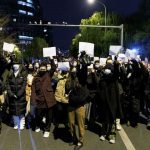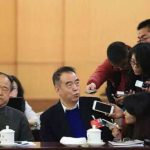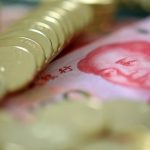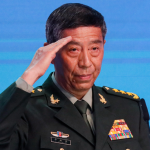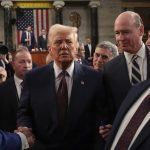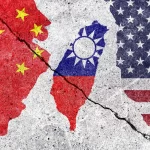BY BRADLEY A. THAYER AND LIANCHAO HAN
At the end of October, the Chinese Communist Party (CCP) summoned 300 of its Central Committee members to hold the Fourth Plenum of the 19th Communist Party Congress — a confluence of words that guarantees a lack of attention from Western media. However, this was a significant event that provided important details about the CCP’s strategic goals and specific steps to realize them, as well as metrics for measuring progress.
As usual for the CCP, this critical document is full of boilerplate, hyperbole, double talk, and a title so prolix it would make Karl Marx blush: “Decision of the Central Committee of the Communist Party of China on Adhering to and Improving the Socialist System with Chinese Characteristics and Promoting the Modernization of the National Governance System and Governance Capability.”
The Fourth Plenum is a milestone because it defined China’s fifth modernization — the modernization of national governance. The previous four modernizations were regarding agriculture, industry, science and technology, and the military. The modernization of national governance the CCP means its political model that is used domestically and shown to allies and ideologically sympathetic states.
This a harbinger for new era in which China is about to implement what we term the “Xi Doctrine” to achieve and legitimize the party-state’s hegemony by exporting China’s totalitarian political system and socialist market economic model to the world.
The document expounds 13 ostensible superiorities of the Chinese socialist system, which the CCP believes can be used to replace the inferior Western liberal democracy system. In fact, the fifth modernization is not about closing the gaps or catching up to the West, as were the previous four, but instead is a path to global governance — in other words, to use China’s socialist system to end capitalism.
When Xi Jinping took power at the end of 2012, he abandoned Deng Xiaoping’s strategy of “hiding our capability, biding our time” to make China a great power. Xi assumed a more aggressive stance to provide a greater role for China in international politics, one that would equal and then surpass the United States.
That strategy evolved into actively participating and pushing for global governance reforms, a euphemism for re-rewriting international rules, which further developed into “one world, two systems,” by creating a dual international system to directly compete against the liberal democracy. Now the People’s Republic of China has entered what Chinese official media have called the “inevitable stage of China’s rise” — that is, China will lead the world into the future.
The CCP’s confidence comes from what it perceives as a highly successful “ruling model” that is a better system than the West’s in all respects. For the CCP, China will lead to a new grand global order. This requires that China leads the world, to set the rules and norms for all other states. This intent is crystalline: China believes that it is now the time for the party-state to surpass its identification as a regional power and to step into the world spotlight.
What this means for the world is that China is on offense, with intent to lead through its solutions to economic growth such as the Belt and Road Initiative, development via the Asian Infrastructure Investment Bank and, for a vision of united global future, China’s “Community of Common Destiny with Mankind,” rhetoric that animates Chinese official documents and speeches.
But China also seeks the victory of socialism. The CCP boasts that it can lead the world to socialist victory because — in its words — it has “unlocked the secrets of governing.” It turns out that the key secret is not so surreptitious. Rather, like all dictatorships, it is to maintain the absolute control of the CCP’s centralized leadership over the country’s political and economic life. The party is above the state and law; the party is the state and the law. The army belongs to the party, not the state. All must obey the CCP, and the CCP obeys Xi — this is the absolute power of control.
Therefore, the so-called modernization of governance stemming from the Fourth Plenum is to advance the security of Xi’s regime and world dominance. The overriding task for the party is to perfect this dictatorial system and make it more efficient and effective in suppressing dissent and advancing the regime’s legitimacy.
One strategic step to execute China’s model of governance is to strengthen the total surveillance system to preemptively eliminate any risks that could threaten the regime’s security. In the CCP’s phraseology, it is to “improve the three-dimensional, legalization, specialization and smartness of social security.” No doubt, China has become a high-tech digital surveillance superpower since Xi Jinping took power, and now its surveillance long arm is reaching out to the world.
China’s model of governance reflects Xi’s regression to a Mao-style strongman rule — with the party’s absolute dictatorship, with violence and terror, and absolutely without mercy on any dissent. The oppression of the Muslim minority in China is the most egregious current example.
To respond to China’s new offense, the U.S. must actively engage in ideological warfare and promote liberal freedoms and values. It must stop Xi’s attempts to define global values by calling attention to China’s effort to dominate. Moreover, the U.S. must reveal the provenance of China’s model and illuminate the cost to the Chinese people and the rest of the world, were they to become the world’s dominant political principles.
This article first appeared in The Hill on 11/29/19 9:00 AM ET








